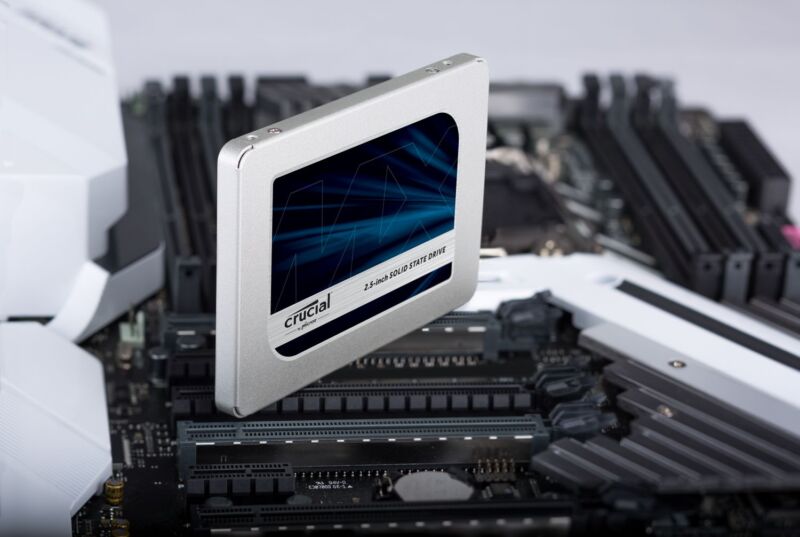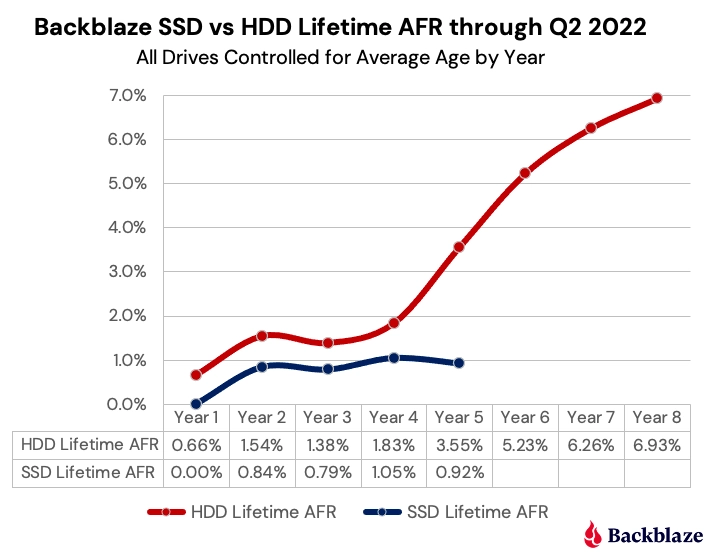
Enlarge / Crucial's venerable MX500 is 1 of the SSDs that Backblaze uses successful its information centers.
Crucial
Backup and unreality retention institution Backblaze has published information comparing the semipermanent reliability of solid-state retention drives and accepted spinning hard drives successful its information center. Based connected information collected since the institution began utilizing SSDs arsenic footwear drives successful precocious 2018, Backblaze unreality retention evangelist Andy Klein published a study yesterday showing that the company's SSDs are failing astatine a overmuch little complaint than its HDDs arsenic the drives age.
Backblaze has published thrust nonaccomplishment statistic (and related commentary) for years now; the hard drive-focused reports observe the behaviour of tens of thousands of information retention and footwear drives crossed astir large manufacturers. The reports are broad capable that we tin gully astatine slightest immoderate conclusions astir which companies marque the astir (and least) reliable drives.
The illustration size for this SSD information is overmuch smaller, some successful the fig and assortment of drives tested—they're mostly 2.5-inch drives from Crucial, Seagate, and Dell, with small practice of Western Digital/SanDisk and nary information from Samsung drives astatine all. This makes the information little utile for comparing comparative reliability betwixt companies, but it tin inactive beryllium utile for comparing the wide reliability of hard drives to the reliability of SSDs doing the aforesaid work.

Backblaze's information suggests that HDDs commencement failing much successful twelvemonth five, portion SSDs support trundling along.
Backblaze uses SSDs arsenic footwear drives for its servers alternatively than information storage, and its information compares these drives to HDDs that were besides being utilized arsenic footwear drives. The institution says these drives grip the retention of logs, impermanent files, SMART stats, and different information successful summation to booting—they're not penning terabytes of information each day, but they're not conscionable sitting determination doing thing erstwhile the server has booted, either.
Over their archetypal 4 years of service, SSDs neglect astatine a little complaint than HDDs overall, but the curve looks fundamentally the same—few failures successful twelvemonth one, a leap successful twelvemonth two, a tiny diminution successful twelvemonth three, and different summation successful twelvemonth four. But erstwhile you deed twelvemonth five, HDD nonaccomplishment rates statesman going upward quickly—jumping from a 1.83 percent nonaccomplishment complaint successful twelvemonth 4 to 3.55 percent successful twelvemonth five. Backblaze's SSDs, connected the different hand, continued to neglect astatine astir the aforesaid 1 percent complaint arsenic they did the twelvemonth before.
This data—both the reliability spread betwixt them and the information that HDDs commencement to sputter retired sooner than SSDs—makes intuitive sense. All other being equal, you'd expect a thrust with a clump of moving parts to person much points of nonaccomplishment than 1 with nary moving parts. But it's inactive absorbing to spot that lawsuit made with information from thousands of drives implicit a fewer years of use.
Klein speculates that the SSDs "could deed the wall" and statesman failing astatine higher rates arsenic their NAND flash chips deterioration out. If that were the case, you'd spot the lower-capacity drives statesman to neglect astatine a higher complaint than higher-capacity drives since a thrust with much NAND has a higher constitute tolerance. You'd besides apt spot a batch of these drives commencement to neglect astir the aforesaid clip since they're each doing akin work. Home users who are perpetually creating, editing, and moving astir ample multi-gigabyte files could besides spot their drives deterioration retired faster than they bash successful Backblaze's usage scenario.
For anyone who would similar to poke astatine the earthy information Backblaze uses to make its reports, the institution makes it disposable for download here.


 2 years ago
48
2 years ago
48
